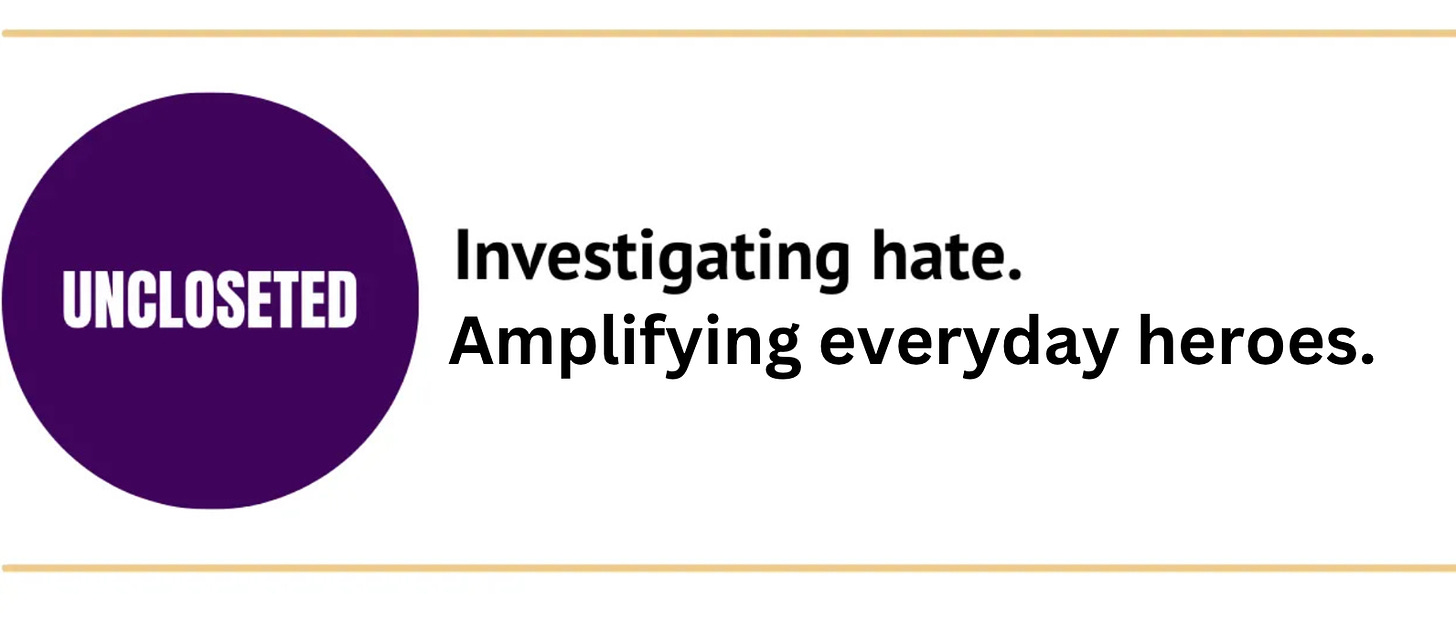Mobile Navigation
- Out Professionals
- Home
- Events
- Out Pro Ed
-
 News
News
- 7 Revealing Findings from a First-of-Its-Kind Map and Analysis of American LGBTQ Bars
- People Who Think the Gay Community Isn’t Also Under Threat Are Naive. Here’s Why.
- Trump’s Harvard Attacks, White Men and DEI
-
Is WorldPride DC Safe in Trump’s America? The Director of Security Weighs in
-
Why We Should Always Call Attacks on LGBTQ People ‘Human Rights Abuses’
Why Gender-Affirming Vocal Care Is “Enormously Important” for Many Trans People
On “Blurring Time,” the title track to Bells Larsen’s latest album, listeners hear the song sway between a high, female-sounding voice, and a low, male-sounding voice. “It’s not as simple as either or. I am both and I’m more, most of all I’m unsure,” Larsen recites.
While the song may sound like it was recorded by two different artists, this isn’t a duet.
It’s entirely sung by Larsen, who uses his voice to tell the story of his sophomore album, released last month.
Larsen says the album serves as a farewell gift to his past self and a welcome home to his new life as a proud trans man. “I very much shaped my transition around this album,” the 27-year-old Canadian singer-songwriter told Uncloseted Media.
Larsen meticulously planned the album around his gender transition. He recorded half the album before going on testosterone and the other half after, hence the different-sounding voices throughout the nine songs.
He says marrying his two realities was important for him as a storyteller. “A lot of trans narratives focus on either the before or the after, and not a lot of holding the two together,” he says.
Larsen is far from alone when it comes to adapting to a new voice following a gender transition. Experts say that of the over 1 million Americans who identify as transgender, an increasing number are turning to gender-affirming vocal care, including hiring voice coaches and even undergoing surgeries.
And a 2018 study in the Language and Linguistics Compass found that vocal cues are an important factor in categorizing someone’s gender, “making the voice an enormously important aspect of gender presentation, particularly for those who are transitioning.”
“It was always something that was very important to me—having a voice that matches my body,” says Alaina Kupec, founder and President of GRACE, a trans-focused nonprofit. “As soon as I spoke, if the sound didn’t match the appearance, then the incongruence was very challenging,” she told Uncloseted Media.
Like Larsen, many trans men change their voice by taking testosterone, which causes a thickening of the vocal cords and creates a deeper-sounding voice.
But for transgender women, estrogen does not change their voice. That’s why there’s a growing industry of coaches who help people with this aspect of the transition.
Voice teacher Brittani Farrell compares relearning how to use your voice after a gender transition to “relearning how to walk with a prosthesis after having your leg amputated.”
Farrell, who has worked with many transgender clients, says gender-affirming voice lessons can be anywhere from a week-long to a lifelong commitment. She’s worked with clients who have a good ear, motor skills, and singing instincts and can make significant progress in a few sessions, while other clients may need upwards of 30 sessions.
“It has to do with somatic awareness,” Farrell told Uncloseted Media. “It can be helpful to have maintenance for years, just to have someone to check in with, but if you step away from it, you’ll lose some of the function.”
Farrell says gender-affirming voice lessons can be physically and mentally challenging for clients, adding that many trans people lack the needed connection to their bodies as they transition. She uses a variety of vocal exercises to help her clients with pitch, resonance and weight, which can all be used to modify the perceived gender of a voice.
When going through her transition in 2013, Kupec worked with Colorado-based voice coach Kathe Perez to change the pitch of her voice. She took four, 60-minute private lessons. Outside of class, there was lots of homework, where she’d have to work on her pitch, frequency and intonation. She also had to learn how to emphasize certain words and phrases, and practice speaking from the top of her voice box instead of using her chest voice.
Kupec says the lessons were effective. “I’d say 90% of the time, nobody ever thinks of my voice as anything other than a female voice. … Occasionally, if I have a cold or if I’m just not focusing on it too much, it can get a little bit on the lower side,” she says, adding that she experiences the most difficulty keeping her pitch high.
Although Kupec is rarely misgendered, she worries about the physical safety of trans women when their voice doesn’t match their appearance.
“Especially in today’s horrible environment for the transgender community, I really worry for women who do get read because of their voices, and that it could put them at risk of physical danger.”
Transgender people are over four times more likely than cisgender people to be victims of violent crime.
Although Kupec’s insurance covered her initial diagnostic lesson, she ended up paying $1,000 for her four sessions with Perez. For people who cannot afford a vocal coach, there are various free and low-cost resources available, such as follow-along videos. Olivia Flanigan, a San Francisco-based gender-affirming voice teacher, offers free lessons on YouTube where she explains, for example, different ways to relieve tension in the throat which can help clients feminize their voice with less strain.
Beyond voice lessons, transgender women can also opt for vocal feminization surgery. One of the most successful vocal procedures is called Wendler glottoplasty, which reduces the vibrational surface of vocal cords, resulting in a slightly higher pitch.
More trans people are opting for these surgeries. Between 2016 and 2019, the number of gender-affirming surgeries performed in the U.S. nearly tripled.
Despite this growth, it’s expensive: Most insurance providers do not cover vocal feminization surgery and the procedure can cost between $5,000 and $9,000.
In addition to taking testosterone, Bells Larsen also worked with a Toronto-based voice coach. Over the course of a year, they worked on his breathing, differentiating his head and chest voice and his singing range.
“Sometimes it’s kind of trippy because I find that I can’t necessarily always use my voice in the way that I used to, or the way I want to,” says Larsen, adding that he went from an alto to a baritone singer and that his voice dropped about an octave.
Larsen says during his vocal transition process, he found solace in remembering Justin Bieber’s post-puberty journey, where the pop phenom had to lean on a vocal coach to relearn how to use his new adult voice.
“I’m a big belieber,” Larsen says. “Justin was a great singer before, and I think he’s a great singer now. Why shouldn’t I be able to do the same?”
Larsen says that when he started posting snippets of his album on TikTok and Instagram, viewers were taken aback when they realized both voices were his. “I was so lost for a second… this is amazing!!” one user commented on TikTok, where Larsen has nearly 20,000 followers and over 300,000 likes, just enough to call himself “lowercase v viral.”
While many facets of the voice have to do with biology, social factors are also at play. Lal Zimman, the author of the 2018 study and a linguistics professor at the University of California, Santa Barbara, says the voice has many characteristics that can be perceived as feminine or masculine, much of which have “nothing to do with physiology.” He says many of the gendered voice stereotypes people make, such as gay men having a “lispy s,” are really just based on how people learn to speak and the voices they are surrounded by.
“It’s about how you learn to speak and how you continue to use what you’ve learned throughout your lifetime,” Zimman told Uncloseted Media. “When you look at the whole picture of a ‘female’ or ‘male’ voice, you’re really looking at a lot of different characteristics that can be combined in different ways.”
As for Larsen, he’s excited to start performing “Blurring Time” across Canada. He canceled his U.S. tour last month after finding out he was no longer eligible to apply for a Visa because his changed passport matches his gender identity.
“The world in which I wrote and recorded this music, and the world in which I’m releasing it, are two completely different worlds,” Larsen told Uncloseted Media.
Despite the political turbulence, Larsen is ready to show off his new voice to the world. “Having my voice change so rapidly in a way that was kind of beyond my control, but simultaneously within my control really forced me to regard my voice as an instrument for potentially the first time in my life,” Larsen told Uncloseted Media.
If objective, nonpartisan, rigorous, LGBTQ-focused journalism is important to you, please consider making a tax-deductible donation through our fiscal sponsor, Resource Impact, by clicking this button:
Out Professionals is a 501(c)(7) nonprofit social organization in the USA. • EIN 13-3918457
OutProEd (Out Professionals Educational Foundation, Inc) is a tax-exempt 501(c)(3) nonprofit. • EIN 87-3853989 • Donations are tax-deductible.






